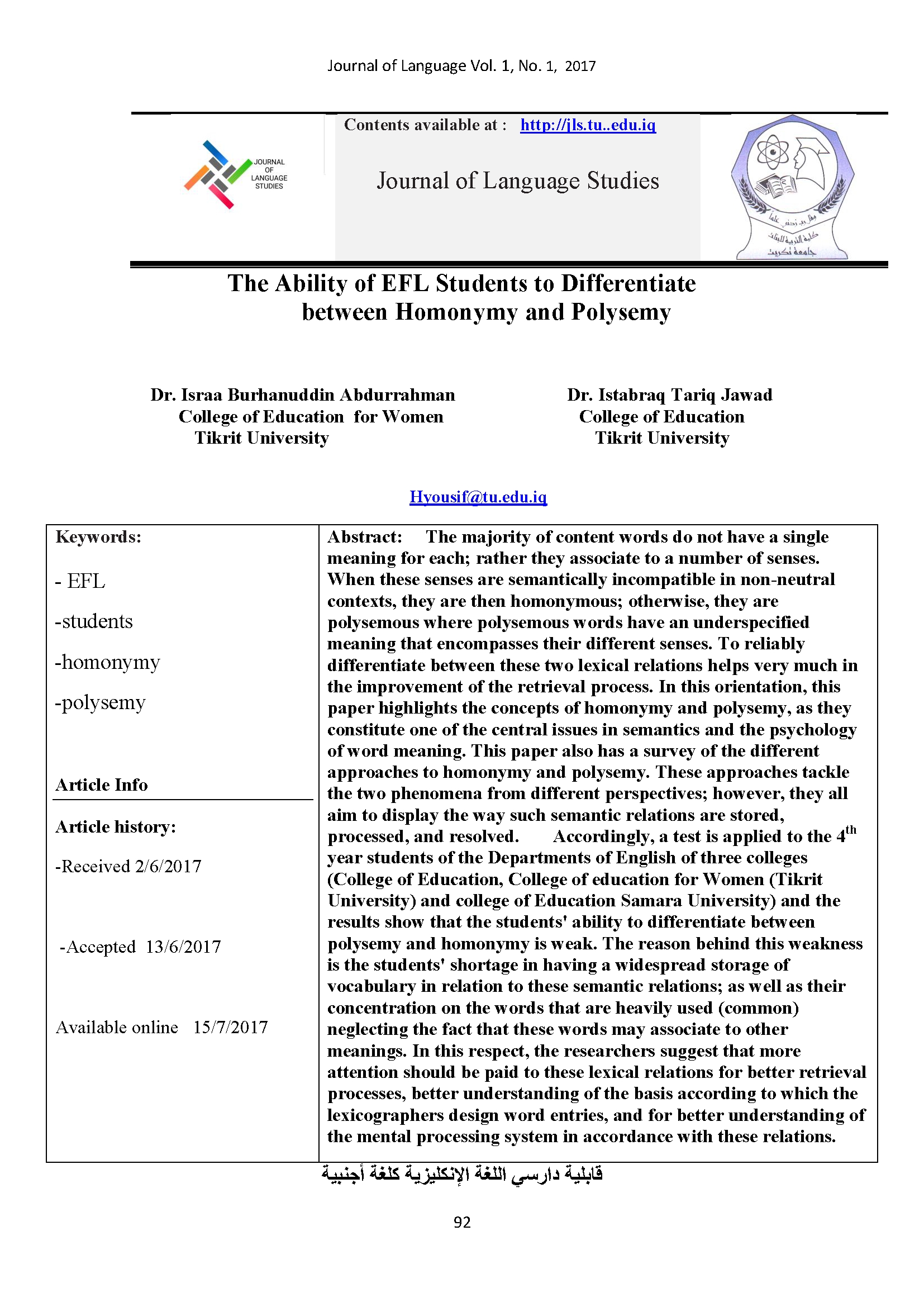The Ability of EFL Students to Differentiate between Homonymy and Polysemy
Israa Burhanuddin Abdurrahman
College of Education for Women Tikrit University
Istabraq Tariq Jawad
College of Education Tikrit University Tikrit University
Abstract
The majority of content words do not have a single meaning for each; rather they associate to a number of senses. When these senses are semantically incompatible in non-neutral contexts, they are then homonymous; otherwise, they are polysemous where polysemous words have an underspecified meaning that encompasses their different senses. To reliably differentiate between these two lexical relations helps very much in the improvement of the retrieval process. In this orientation, this paper highlights the concepts of homonymy and polysemy, as they constitute one of the central issues in semantics and the psychology of word meaning. This paper also has a survey of the different approaches to homonymy and polysemy. These approaches tackle the two phenomena from different perspectives; however, they all aim to display the way such semantic relations are stored, processed, and resolved. Accordingly, a test is applied to the 4th year students of the Departments of English of three colleges (College of Education, College of education for Women (Tikrit University) and college of Education Samara University) and the results show that the students' ability to differentiate between polysemy and homonymy is weak. The reason behind this weakness is the students' shortage in having a widespread storage of vocabulary in relation to these semantic relations; as well as their concentration on the words that are heavily used (common) neglecting the fact that these words may associate to other meanings. In this respect, the researchers suggest that more attention should be paid to these lexical relations for better retrieval processes, better understanding of the basis according to which the lexicographers design word entries, and for better understanding of the mental processing system in accordance with these relations.

